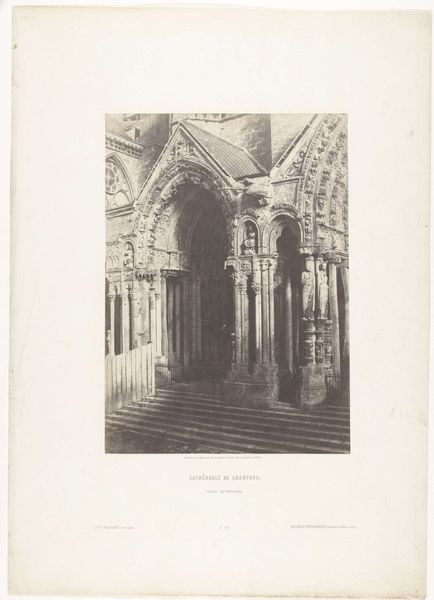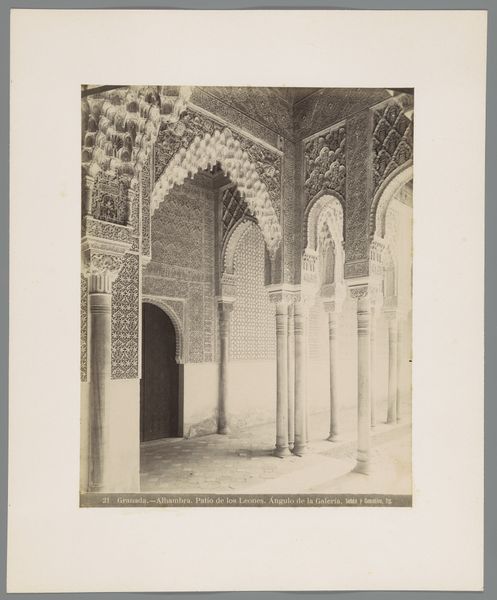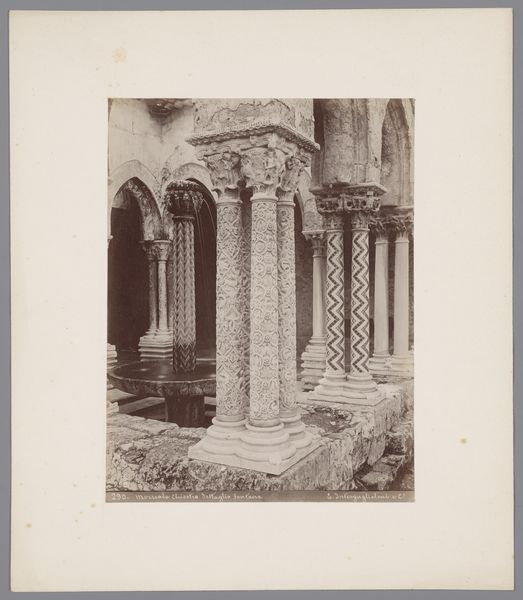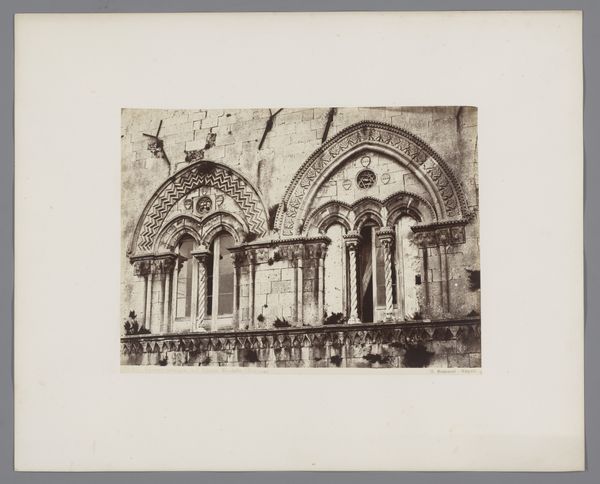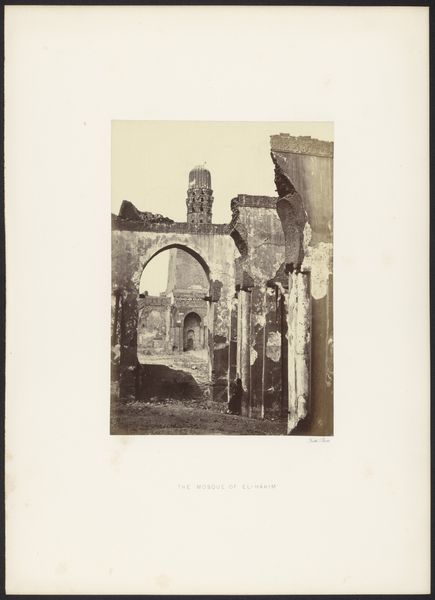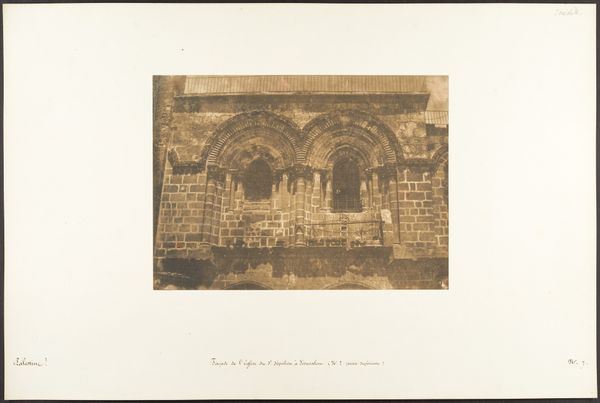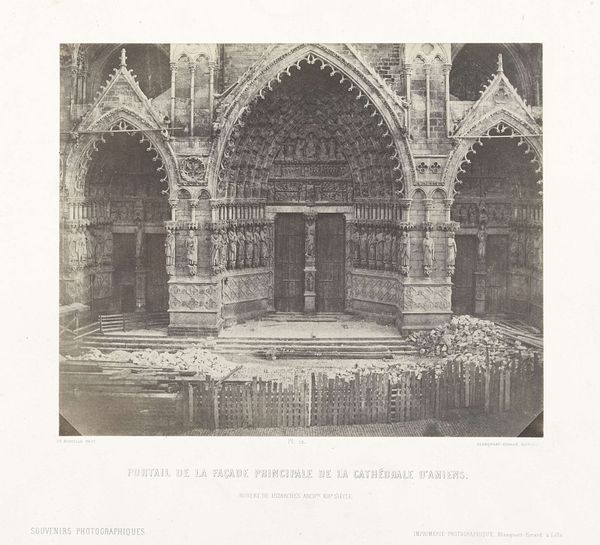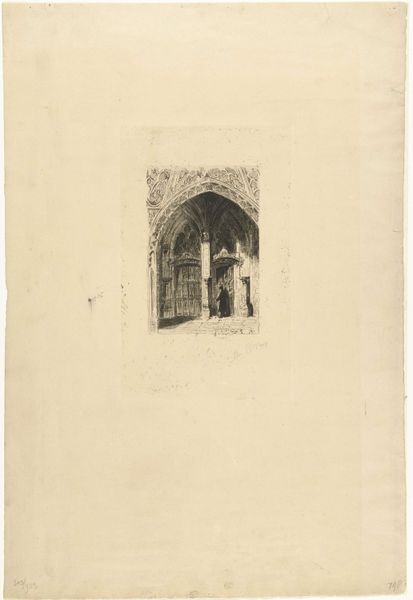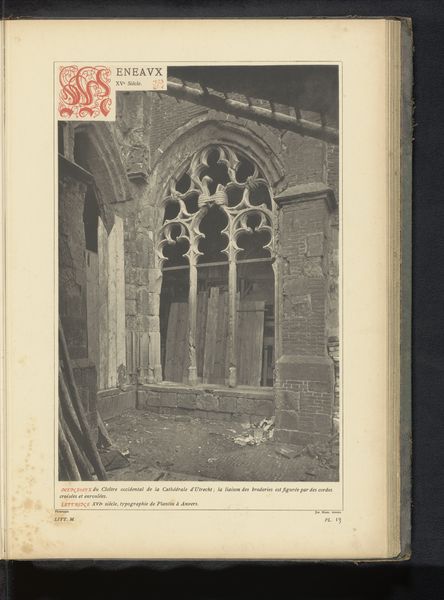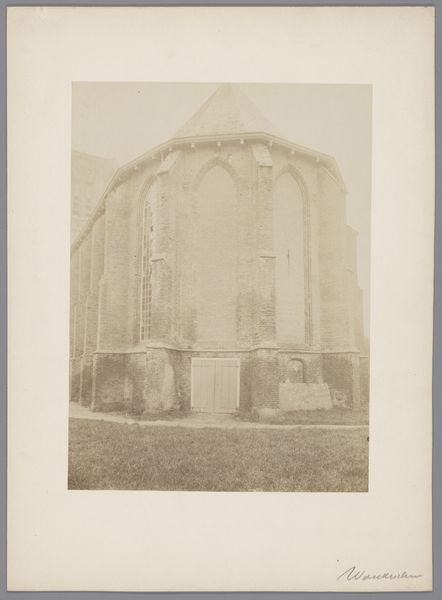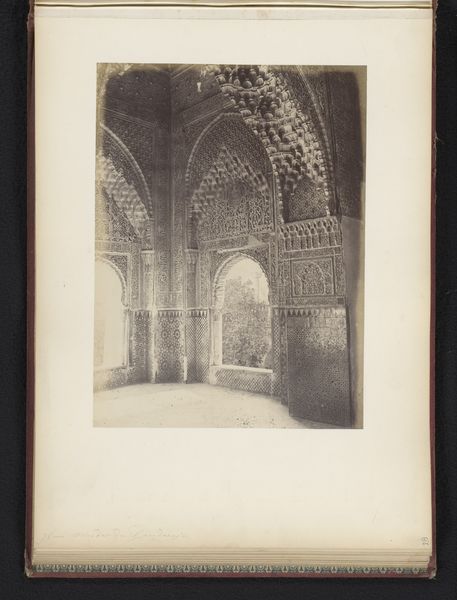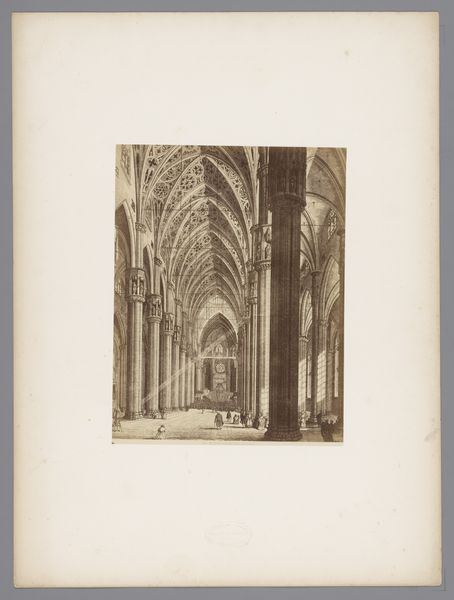
Dimensions: height 375 mm, width 237 mm
Copyright: Rijks Museum: Open Domain
Curator: Up next, we have an impressive gelatin-silver print from the Bisson Frères, a photographic firm active in France. Dating from around 1850 to 1865, this artwork is titled "Portaal van de Notre-Dame te Parijs," or Portal of Notre-Dame in Paris. Editor: My first impression is of striking contrasts. The stark grayscale tones emphasize the heavy, monumental scale of the Gothic portal. Curator: Indeed. The Bisson brothers were renowned for their architectural photography, and here we see a meticulous capture of Notre-Dame's façade. What interests me is how photography, a relatively new technology at the time, was deployed to document and disseminate architectural achievements like this. Think about the labor involved in producing these large-format prints, the logistics of transporting equipment, the exposure times required. This photograph itself is a product of significant material investment. Editor: I agree. The focus here on texture, line, and form speaks to the enduring influence of Romanticism while the subject matter and tonal range, which shift from deep blacks to softer grays, capture an essential sense of Gothic grandeur. This is architecture rendered sublime, emphasizing the power of symmetry and complex ornamentation. The repetition of shapes creates a sense of visual harmony, and the light almost seems to emanate from within the stone itself. Curator: Absolutely, the visual weight underscores the socioeconomic power of the Church, while simultaneously democratizing its image through mass reproduction. Photography made these powerful architectural symbols accessible to a wider audience, impacting how people viewed and understood not just Gothic art but also notions of labor and craftsmanship. Editor: It is true that photographs of monuments such as this played a vital role in shaping architectural knowledge and influencing artistic styles throughout Europe. This particular image seems to balance objective recording with subjective interpretation. Curator: Well said. Reflecting on this image now, it’s impossible not to think about its place in the historical record and the continued impact of the Notre Dame's image today. Editor: This photograph serves not just as a historical document, but also as an artwork worthy of our aesthetic contemplation.
Comments
No comments
Be the first to comment and join the conversation on the ultimate creative platform.
